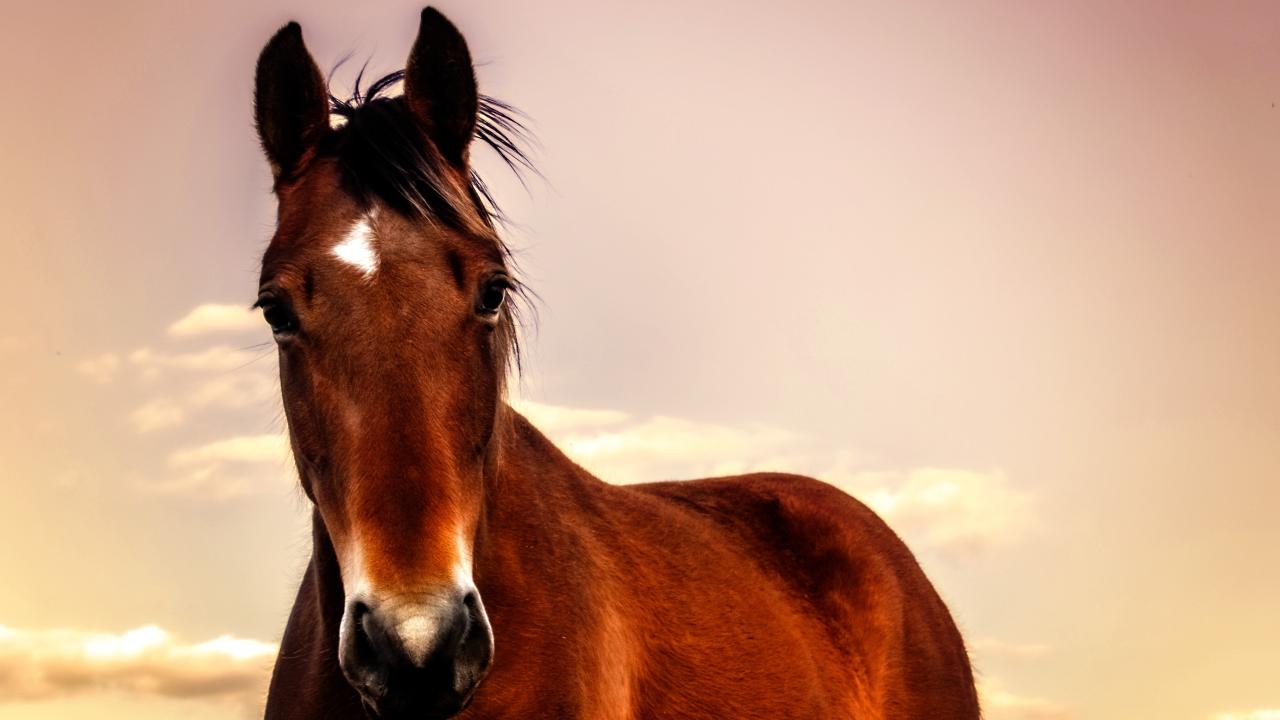
Genetic cause of night blindness confirmed in Tennessee Walking Horses and identified in Standardbreds and Missouri Fox Trotting Horses
A new collaborative research study led by Dr. Rebecca Bellone of the UC Davis Veterinary Genetics Laboratory (VGL) provided further evidence that the CSNB2 allele causes congenital stationary night blindness (CSNB) in the Tennessee Walking Horse.
Night blindness refers to the inability to see in low light conditions, such as at night or at dusk. Affected horses may have difficulty finding feed buckets and navigating at night, and are therefore prone to being injured or getting cut on fences, for example. No treatment is available for CSNB, but affected horses can be managed by providing a light source to help them navigate at night.
Researchers also detected the CSNB2 allele in nine other horse breeds and confirmed that horses homozygous for CSNB2 (those with two copies of the CSNB2 allele) were also night blind in the Standardbred and the Missouri Fox Trotting Horse.
The study built upon previous work by VGL researchers and others that identified a single nucleotide polymorphism (SNP) in the glutamate metabotropic receptor 6 (GRM6) gene as likely causal to CSNB in a Tennessee Walking Horse (Hack et al. 2020). This variant was called CSNB2 because it is the second variant identified to cause CSNB in horses; the first of which was LP.
The recent study confirmed that CSNB2 is inherited as an autosomal recessive trait, meaning that only homozygous horses (CSNB2/CSNB2) are affected by CSNB, and heterozygous or “carrier” horses (CSNB2/N) are not affected. The authors performed ocular examinations including electroretinography (ERGs) on three CSNB2/CSNB2 homozygous horses and found all three to be affected by CSNB (one Standardbred, one Missouri Fox Trotting Horse, and an additional Tennessee Walking Horse). Additionally, seven CSNB2/N heterozygous horses and nine N/N horses underwent the same examinations and ERGs, and were determined to be unaffected by CSNB. These findings support two copies of CSNB2 are causative for CSNB in horses.
Researchers found the allele frequency of CSNB2 ranged from 0.0010 in Quarter Horses to 0.17 in pacing bred Standardbreds (Table 1). Overall, the highest allele frequency was found in pacing Standardbreds, with more than 1 in 4 (29%) pacing bred Standardbreds expected to be carriers of the CSNB2 allele, and 1 in 33 (3.0%) expected to be affected by CSNB. The CSNB2 was only identified in the pacing subpopulation of Standardbreds, and not in the trotting subpopulation.
“Many Standardbreds race at night. It is currently unknown if CSNB2 impacts racing performance. Therefore, routine testing for CSNB2 is recommended for pacing Standardbreds and careful management decisions need to be considered for those that test homozygous (CSNB2/CSNB2)” advised Dr. Bellone, Professor in the Department of Population Health of Reproduction and equine geneticist who has been studying the genetics of ocular disorders in horses for nearly 20 years.
This is the first report with clinical confirmation of CSNB in Standardbreds and Missouri Fox Trotting Horses, suggesting the condition has been significantly underdiagnosed.
“Previous studies have indicated that other breeds aside from LP spotted horses had night blindness, but this is the largest across breed study to investigate this disorder in horses and highlights the need for further study.”- Said Dr. Sara Thomasy, Professor of Comparative Ophthalmology at University of California, Davis.
The full publication can be found here. The study was supported in part with funding from the United States Trotting Association (USTA) and from the UC Davis Center for Equine Health.
If you think your horse is affected by CSNB, an ocular examination including electroretinography (ERG) should be performed by an ACVO board certified Veterinary Ophthalmologist (https://www.acvo.org/ophthalmologist-search).
Given recent findings, the VGL recommends testing horses from breeds that have the CSNB2 allele to allow for informed breeding decisions, particularly Tennessee Walking Horses, Standardbreds, Missouri Fox Trotting Horses, and closely related breeds. Testing can be ordered through the VGL at https://vgl.ucdavis.edu/test/csnb-tennessee-walking-horse.
Table 1. CSNB2 genotypes and allele frequencies from the investigated horses, and the expected carrier and CSNB-affected frequencies for each breed.
|
CSNB2 allele frequencies and expected number of CSNB homozygotes (affected) by breed |
||||
|
Breed |
n |
CSNB2 Allele Frequency |
Expected CSNB Affected Frequency |
|
|
Miniature Horse |
99 |
1.0% |
0.01% |
|
|
Missouri Fox Trotting Horse |
89 |
8.4% |
0.71% |
|
|
Morgan |
330 |
1.4% |
0.02% |
|
|
American Quarter Horse |
486 |
0.10% |
0.0001% |
|
|
Racking Horse |
58 |
10% |
1.1% |
|
|
Rocky Mountain Horse |
74 |
0.68% |
0.005% |
|
|
American Saddlebred |
92 |
0.54% |
0.003% |
|
|
Spotted Saddle Horse |
55 |
10% |
1.0% |
|
|
Standardbred (pacer) |
110 |
17% |
3.0% |
|
